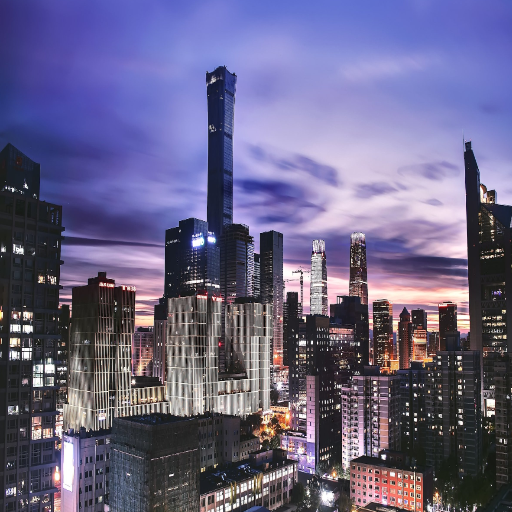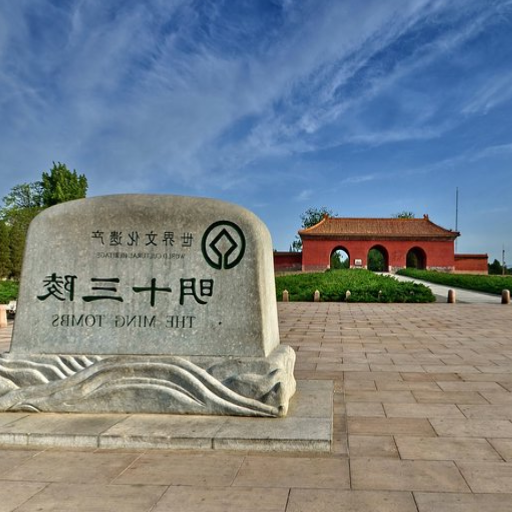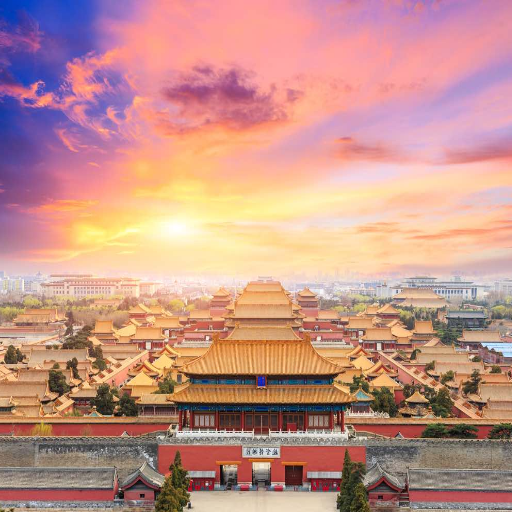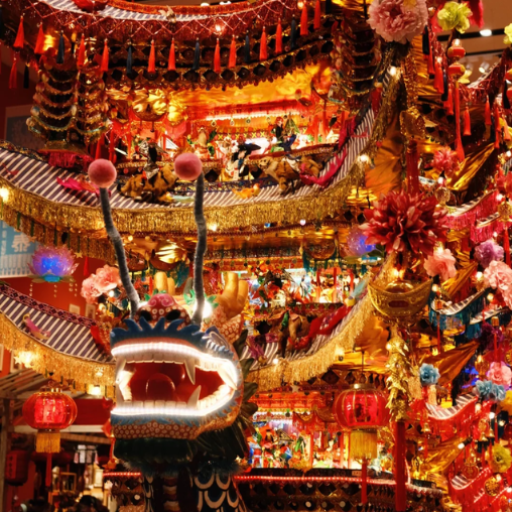Beijing is China’s capital city, and it is well known for its authentic culture and ancient tradition. Bejing is home to the Great Wall and the Forbidden City. These famous landmarks generally take up most of the attention, and along with that, the city also has untold mysteries that are waiting to be discovered. Teahouses, serene hutongs, art enclaves, and unique foods are some of the exotic features Beijing is renowned for, and one of the many reasons Beijing is so culturally diverse is that For first-time or unique travelers, this blog will focus on the hidden, deep cultural interactions and experiences that will surely make your visit to Beijing unforgettable. To those seasoned explorers, Beijing is an everchanging city with something new and extraordinary to reveal.
What Are Some Hidden Gems in Beijing?

Visit Hutongs in Beijing
Beijing Hutongs are ancient neighborhoods that take us through the city’s intricate history. These old neighborhoods were created in the Yuan dynasty (1271-1368) and are best recognized by their traditional courtyard houses called siheyuan. In addition to local life, you’ll uncover hidden restaurants, Teahouses, and artisan shops. There’s always something new to explore along the way.
Some of the most famous Hutongs to visit include Dongjiaominxiang, renowned for being the longest Hutong in Beijing; Yandai Xiejie, well-known for its antique stores; and Nanluoguxiang, which serves delicious food and is recognized for its vibrant shops. Grab a bike or walk, relax, and enjoy the environment, uncovering amazing things around every corner. A hutong tour provides a visual feast and a captivating experience of Beijing’s rich heritage.
The Magic of the Panjiayuan Antique Market
Welcome to the Panjiayuan Antique Market. If you are looking for historical Jurassic pieces or if you are a collector, Panjiayuan is a must-visit market. One of the largest in Beijing, it covers an area of over 48,500 square meters. With 4,000 stalls, visitors can pick vintage furniture, ceramics, jade, calligraphy, ancient coins, and traditional Chinese paintings. Every object comes from different parts of China and contributes to China’s artistic artistry and unparalleled pieces of history.
This busy market has many activities and aspects, including opening early in the morning and closing late in the afternoon, with weekends being the busiest. Arriving early is recommended, as it allows you time to browse the finds before the market gets busy. As with all markets, bargaining is part of the experience and, if mastered, can enhance the shopping experience immensely. The Panjiayuan market is not just an experience for seasoned collectors; any traveler looking for Beijing charm makes this market a must-visit.
The Secrets of the Drum and Bell Towers Revealed
Most tourists heading into Beijing identify these structures as the Drum and Bell Towers. These landmarks were built during the Yuan Dynasty (1271-1368). These used to be the main structures of timekeeping within the city, but they also regulated day-to-day life. The Drum Tower had over twenty large drums used to beat as the night hours passed. The Bell Tower has a 7-meter tall bronze bell that weighs over 63 tons. The bell has one sole purpose: to be struck and signify dawn.
The tower’s architectural design showcases the incredible talent of ancient Chinese engineering by elegantly utilizing intricately carved wooden frameworks and Symmetrical pleasing designs. The towers have steep wooden staircases that grant visitors access to astonishing panoramic views of modern Beijing and the Hutongs. These towers also have scheduled performances to display the art of timekeeping with drums. The Drum and Bell Towers are a testament to the combination of ancient China’s rich heritage, skillful artistry, and advanced technology.
Are There Any Unusual Attractions Around Beijing?

Visit the 798 Art Zone for a Creative Experience
The 798 Art Zone, or Dashanzi Art District, stands at the intersection of contemporary art and industrial history, giving visitors a unique experience. It is situated within a 1950s factory complex with a maze of industrial-style buildings containing modern art exhibits, sculptures, photography pieces, and multimedia displays. This mix of contemporary creative art and other architectural features helps the visitors deeply analyze and experience the city’s modern artistic vision.
Besides art galleries, 798 Art Zone boasts a mixed-use community with modern design shops, studios, and trendy cafes. While walking around the district, visitors also encounter a variety of street art by famous and emerging artists. The 798 Dashanzi Art Zone represents a paradigm of contemporary innovation and cultural exchange and, therefore, one of the focal points of interest for people passionate about modern art.
The 798 Art Zone is ideal for those wishing to explore the changes in China’s creative environment. The region’s fully integrated artistic ingenuity can be seen through many regularly held events such as exhibitions, workshops, or even fashion shows. As a symbol of how Beijing balances modernization and tradition, the 798 Art Zone is a wonderful place to appreciate art over the paper-free and numerous galleries.
Explore the Ming Tombs
The Ming Tombs are located in a beautiful valley about 30 miles northwest of Beijing. They are a UNESCO World Heritage site and represent China’s imperial history. The tomb complex, which was constructed during the Ming Dynasty between 1368 and 1644, holds the remains of thirteen emperors who designed their tombs to fuse traditional Chinese architecture with aspects of power and spirituality.
Location and Accessibility: The site in the Changping District can be accessed by public transport and guided tours that leave from Beijing. The provided coordinates will navigate visitors to a tranquil valley surrounded by verdant hills, which embody the feng shui concept of choosing suitable locations for burial sites.
Architectural Highlights: The Sacred Way, a four-mile ceremonial pathway to the tombs, has 36 formidable stone sculptures of mythical imperial guards, officials, and creatures on either side. This reinforces the support an emperor receives from heavenly powers even after death.
Individual Tomb Structures: The Changling tomb is the most impressive and visited tomb. It features the Ling’en Hall, which is constructed out of colossal nanmu wood columns and illustrates stunning architecture. The columns have been subject to technical examinations, and claim the wood’s remarkable resistant qualities justify its role in safeguarding imperial legacy.
Cultural and Historical Importance: The preservation of the Ming Tombs helps us understand the burial practices, innovation, and metaphysical beliefs of Chinese royalty. They represent both a cultural legacy and an enduring proving ground for the application of Confucian ethics.
Beyond history, the Ming Tombs offer visitors an incredible opportunity to relate to and connect to customs that are still revered and explored with astounding zeal.
Take a Great Wall Hike Off the Beaten Path
Exploring less-traveled portions of the Great Wall of China allows you to enjoy one of the world’s most magnificent constructions without many people around. These remote treks are usually accompanied by jagged, unrestored portions of the wall, which capture its historic beauty and rugged nature. These are some of the most critical factors and technical aspects when planning such a hike:
Accessibility of the Trail
Certain remote areas are accessible only by private or hired transportation. Make sure you check the trail’s opening and the available parking spot.
The Jiankou, Gubeikou, and Simatai regions are famous for their pristine nature, but there may not be enough guides to explore them.
Level of Difficulty
There are steeper and higher trails like Jiankou, which are tricky and reserved for expert-level hikers.
Easier ones are in Mutianyu and Jinshanling, which include restored pieces alongside the walls to some extent, offering more gentle steps.
Critical Equipment
Sturdy hiking shoes for the rugged and steep rocky surfaces.
A backpack containing liquid, food items, and a basic aid kit.
GPS or a map, as most of the less favored regions, have low network reception.
Safety Precautions
Be careful because many non-maintained walks have terrible loose stones and decaying pathways.
Always travel in packs or let someone know your plans.
If hikers take an unorthodox path, they will be able to appreciate not only the breathtaking views but also the ancient artistry of the Great Wall, making the journey truly unforgettable.
What Are the Must-See Attractions in Beijing?

Discover the Splendor of the Forbidden City
Located in the Center of Beijing, the Forbidden City is a must-see for travelers interested in China’s imperial history. Home to the Emperors of the Ming and Qing Dynasties, the complex spreads over 180 acres and houses more than 980 buildings. China’s largest wooden structure, the Hall of Supreme Harmony, along with the Imperial Garden, filled with ancient trees and rich vegetation, is a must-see. Golden roofs and exquisite carvings on the walls of every building truly depict Chinese artistry.
Size: 180 acres, making it one of the largest imperial palaces around the world.
Construction Period: Built 1406 to 1420, showcasing ancient era materials and architectural knowledge.
UNESCO Status: Since 1987, The Forbidden City has been recognized as a World Heritage Site.
Set aside half the day to explore all significant parts of the city. Rent an audio guide for more historical context and information.
Admire the Temple of Heaven
The Temple of Heaven is a stunning piece of architecture from the Ming and Qing dynasties located southeast of Beijing. It reminds us of the connection between earth and heaven.
Construction: Built-in 1420 during Emperor Yongle’s reign, it was a ceremonial site where emperors bowed to heaven to bless them with good harvests.
Design: The temple and the famous Hall of Prayer for Good Harvests are circular. They were purposefully designed to represent heaven while their square bases encompassed earth.
Technical Parameters: The Hall of Prayer for Good Harvests is 125 feet high and has a triple-gabled circular and capped roof that rests on 28 intricately carved wooden pillars. It is held together without nails, an example of stellar engineering.
UNESCO Status: It was designated as a world heritage site in 1998. The Temple of Heaven is known for its value due to its culture and spirituality worldwide.
Make sure you set aside a reasonable amount of time for the visit. While it is essential to see the Echo Wall and Circular Mound Altar, the Temple of Heaven has incredible historical and architectural value.
Explore the Summer Palace
Beijing is home to The Summer Palace, a stunning example of beautiful Chinese scenery and royal history. Built in 1750 as a royal summer hideaway, the complex covers over 290 hectares, three-quarters of which are magical Kunming Lake. It was made to illustrate the beauty and integration of nature and architecture, a characteristic of Chinese culture.
Kunming Lake: The Lake is artificial and covers an area of around 220 acres. It is manmade, with a surface area that supports boating and picturesque reflections averaging 1.5 meters in depth.
Longevity Hill: At 60 meters in height, it elevates the landscape and is home to famed sites such as the Tower of Buddhist Incense.
Architectural Features: Over 3,000-year-old manmade creations, including bridges, pavilions, and halls, were meant to be a part of the landscape, show the exquisite skill of local craftsmen, and please nature. They were built for the king and to please nature.
While at the Summer Palace, one can stroll through the Long Corridor, which features 728 meters of beautifully painted walls, or visit the Marble Boat, a stunning pavilion by the lake representing stability. The Summer Palace has been a UNESCO World Heritage Site since 1998. It is known for its combination of cultural history, natural landscapes, and architecture. Be prepared to spend several hours walking through the grounds and fully experience this remarkable piece of history.
Where Can You Enjoy Authentic Chinese Culture in Beijing?

Visit a Show at the Working People’s Cultural Palace
Watching a show at the Working People’s Cultural Palace was an excellent spot to witness a beautiful expression of Chinese culture. Everything performed at the palace is famous for its colorful exhibitions of music, dance, and dramatic arts handcrafted at this exceptional landmark. The palace is next to the Forbidden City, which makes it easy to visit while getting the cultural and architectural beauty of the place.
From a more professional angle, the venue’s working acoustics perform effectively to improve the listening experience, making everything played on stage straightforward and enjoyable. The performances are usually accompanied by intricate lighting and storytelling images that go hand in hand with the stage action. During the visit, there were no specific technical parameters like the seat design or sound equipment, but some things gave confidence that the place was prepared for the audience.
Try the Iconic Street Food at Wangfujing Snack Street
The first thing that strikes anybody visiting Wangfujing Snack Street for the first time is the variety and flavors of traditional Chinese street food. There was a lot of movement in the place, and my nose was greeted with the appetizing scent of prepared food, which made my culinary adventure unforgettable. All these marvels had the true essence of regional Chinese cuisine, from the candied hawthorn skewers to the crispy fried scorpions to the delicious lamb kebabs.
Even though, in my opinion, this differs from how something is measured technically, the Wangfujing organization streets and the layout increases enjoyment. Even in intense crowds, getting around with wide paths was easy. The stalls were also spaced out to make them easy to get to. The operator’s spaces also appeared to be scrupulously clean, which indicates orderliness in hygiene and safety. These reasons explain why Wangfujing Snack Street is one of the places one must visit to understand the street food culture.
Learn About the Lama Temple
I found visiting Lama Temple to be serene and enlightening. The vibrant colors and intricate carvings blend Chinese construction skills and artistic creativity. It gave me a sense of peace as I walked through the halls, especially in the Hall of Harmony and Peace, which was filled with incense, giving it a spiritual vibe. I was in awe, feeling the massive Maitreya Buddha statue carved from a single piece of white sandalwood. It is a true sculptural wonder. Their preserving the intricate details of the temple says so much about their cultural heritage.
This could also be translated into technical parameters by considering the architectural design symmetry, material strength using sandalwood and stone, and space configuration for people flow control. They aim to improve the visitor experience while safeguarding the temple’s religious and historic value. It is a landmark of reverence, and thus, the arrangement provides the perfect balance between functionality and beauty.
When Are the Best Times to Visit Beijing?

Travel Ahead of the Chinese New Year Gap
Beijing is one of the most beautifully decorated cities for New Year’s celebrations. In the spirit of the festive season, I recommend traveling to Beijing for the Spring Festival from late January to the middle of February. Unlike modernization, Beijing embraces longstanding traditions like temple fairs, lion dances, and the bold color red, which characterizes Chinese customs.
Be prepared for heavy traffic if you’re visiting the temple or the lion dance, and be aware wait times could be significantly longer. The days leading up to Spring Festival pack quite a punch; due to mass tourism, other bucket list places such as the Forbidden City and the Temple of Heaven see an influx of visitors. It’s best to book accommodation and transport before the prices hike a few weeks out. Don’t overlook getting proper winter clothing in advance, as it tends to get very cold. Regardless of the meticulous planning needed, you can fully immerse yourself in Chinese culture, which feels indescribably fulfilling.
Experience the Calm of Beijijg During Autumn
The Autumn season in Beijing has always left me in awe. Indeed, it is truly splendid. This time of the year offers moderate temperatures, Low-level clouds, and multi-colored leaves that give life to the city in orange, yellow, and purple. If you ask me, the best time to visit offseason gems such as the Great Wall or Forbidden City is during Autumn because the landmarks look exquisite, and the weather is delightful.
Regarding the technical aspects of the worthwhile Beijing trip, air quality improves during this time, providing great views and improving opportunities for more evident photography. Also, the average temperature, ranging between 10 and 20 degrees, is comfortable and ideal for partaking outdoors during pleasant days. Additionally, the decrease in humidity ensures that Diurnal activity is more pleasurable.
If you want a suggestion from my side for the perfect time to visit, I recommend mid-late Autumn for a tranquil experience. If visiting during early October, note that the National Day Holiday in the first week would make Beijing significantly busier. My whole trip didn’t involve too much planning and was made smooth by simply wearing Cardigans and light jackets during the days, for the brisk evenings a hat was sufficient. Overall, the combination of nature and the rich cultural experience of Beijing in Autumn is breathtaking.
Skip the Crowds by Visiting During the Off-Peak Seasons
Traveling to Beijing during off-peak seasons like late Winter or early Spring is ideal for avoiding crowded tourists. These seasons are much nicer for me because of the lower prices for accommodation, fewer lines at the major attractions, and an overall more peaceful atmosphere. Take, for example, late February or early April. There will be fewer tourists during this time, meaning you can enjoy places like the Great Wall or the Forbidden City at your own pace.
These months have the added benefit of not having long waiting times in the transport hubs and making getting tickets for popular tours easier for high-demand tours. In terms of the weather, prepare yourself for the cooler temperatures during late winter (28°F/-2°C to 50°F/10°C) and early spring (41°F/5°C to 68°F/20°C). Staying comfortable requires a warm coat, gloves, and layers. It is also important to note that while these seasons provide tranquility, some facilities may have reduced hours of operation due to the lower visitor numbers during this time, so you must plan.
Frequently Asked Questions (FAQs)
Q: What are some unusual things to do in Beijing that aren’t touristy?
A: You may consider exploring the hutong neighborhoods, visiting the 798 Art District, and walking the less-frequented parts of the Great Wall of China. You can also try out some of the local cafes and eateries and get to know the culture around the city.
Q: Where can I find the best Peking duck in Beijing?
A: For an authentic Peking duck experience, visit a Michelin-starred restaurant such as Quanjude and Da Dong. They have the best Quan Jude, and you can enjoy ancient Chinese culture while having this delicacy served in a historical setting.
Q: What is a hutong, and why should I visit one in Beijing?
A: A hutong is a narrow street in the old part of Beijing commonly described as an alleyway. When you visit Hutongs, you will appreciate the historical side of Beijing, meet locals, and find hidden boutique souvenirs and themed cafes around the area.
Q: Do you know of any unusual ways to spend time in Beijing besides visiting its historical attractions?
A: Besides sightseeing, you can try at traditional Chinese calligraphy, shop at local markets for authentic souvenirs, or even participate in a dumpling-making workshop for a unique cultural experience.
Q: What are some popular yet secret attractions in Beijing that I should see?
A: Some lesser-known but equally captivating attractions are Beihai Park, the Mutianyu section of the Great Wall, and the 798 Art District, which is famous for its modern Chinese art.
Q: What is the best way to use the subway system in Beijing to travel to less popular regions?
A: The Beijing subway is an efficient way to travel around the city. Use a navigation app or check out an online map to get to the more unpopular areas and sites. For more off-the-beaten-path experiences, look for stops around the hutong areas or the art district.
Q: What time of the year offers the most unusual activities in Beijing?
A: When the weather is moderate, you should visit Beijing in spring (April to June) or autumn (September to October). This period is perfect for walking tours and visiting outdoor markets and parks and does not have heavy summer tourism.
Q: Are there any strange beverages that I can order in Beijing?
A: Definitely. While in Beijing, ensure you sample the traditional Baijiu drink, a potent Chinese liquor, or herbal teas. Both give you a taste of China like no other. You can also get fancy beverages at cafes in the hutong areas.